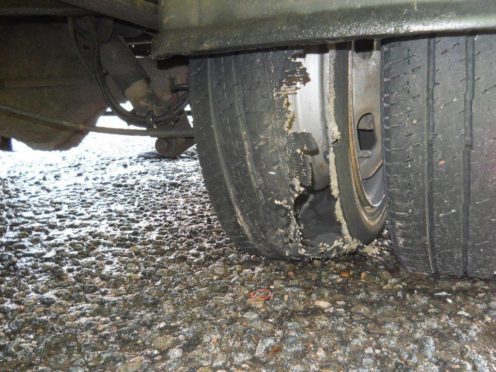Making sure your tyres are safe for the road should be “one of the basics” before getting behind the wheel.
A tyre blow-out is a very sudden loss of pressure where the tyre is quickly destroyed, making it difficult to drive, having an adverse effect on the steering and stability of the vehicle.
There is also a chance that a blowout can damage the wheel itself and the surrounding area on the vehicle.
Road Policing Constable Angus Macleod said: “Our advice is to check your tyre pressures regularly for under or over-inflation.
“Make sure you are aware of your vehicles maximum load weight and don’t go over it.
“Also check for any obvious damage to the area of tread or the sidewall’s for cuts, cracks or bulges.
Bulges in tyres can occur when the sidewall becomes damaged – which is often caused by impact from ‘kerbing’ or from pot holes in the road.
“The structural integrity of the tyre sidewall is weakened and the internal air pressure creates a visible bulge.
“If you are unsure, it always best to have the tyres checked by a reputable garage or tyre fitting premises. It is always better to be safe than sorry.”
The most common cause of a tyre blowout is under-inflation or overloading of the vehicle, which can cause a high level of friction, resulting in heat that will weaken the tyre and eventually lead to it bursting, as would appear to be the case in this instance.










